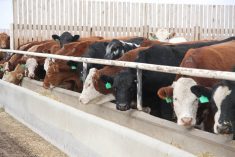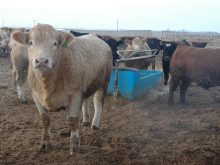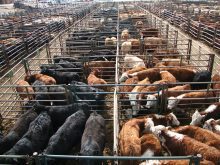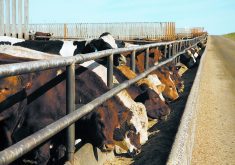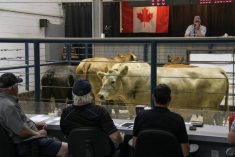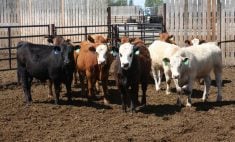This cattle market information is selected from the weekly report from Canfax, a division of the Canadian Cattlemen’s Association. More market information, analysis and statistics are available by becoming a Canfax subscriber by calling 403-275-5110 or at www.canfax.ca.
Fed cattle lower
The Canfax steer average was $189.12 per hundredweight last week, down $2.80, and heifers were $186.29, down $3.51.
It was the first time since February that prices were lower than $190.
Dressed bids were $5-$7 lower by late week.
Market power is shifting from the cattle feeder to the packing segment, which resulted in weaker prices and basis. Prices are now seven percent lower than the highs of June.
Read Also

Short rapeseed crop may put China in a bind
Industry thinks China’s rapeseed crop is way smaller than the official government estimate. The country’s canola imports will also be down, so there will be a lot of unmet demand.
The Chicago live cattle contract weakened last week as wholesale beef prices fell because of the move into the summer doldrums for beef demand. .
Most cattle sold in Canada last week were scheduled for delivery during the first part of August.
Cash to futures basis levels are weakening as they normally do in July.
It was the first time in 12 weeks that cash prices were at a discount against the nearby futures contract.
Market ready supplies in eastern Canada remain tight, which has forced the packing plant in Guelph, Ont., to scale back hours.
A few western Canadian fed cattle were scheduled for delivery into Eastern Canada.
U.S. packers showed interest, but bids were too low to do business.
For the first half of the year, fed exports to the United States were down 50 percent, or 103,500 head, compared to last year.
Canadian steer carcass weights appeared to hit bottom three weeks ago, and since then weights have increased 22 pounds.
Cattle in the U.S. Plains brought US$150-$151 per cwt. compared to the majority of the previous week’s sales at $148-$152, Reuters reported.
Cows weaken
More cows went to auction because of dry weather, but demand has been moderate.
Non-fed exports have recently been close to a year ago, after being about 25 percent lower than last year through most of 2015.
Western Canadian cow slaughter in June has been generally 500-1,500 head per week lower than last year.
D1, D2 cow prices last week fell about C$2 per cwt., while D3 prices were steady. D1, D2 cows ranged $130-$143 to average $135.88, and D3s ranged $117-$130 to average $125.38.
Rail bids were steady at $262-$267.
Feeders firm
The value of stocker calves lighter than 500 lb. was too light to establish a reliable market trend.
Steers 500-700 lb. rose, while similar weight heifers traded mixed on varied quality.
Sales totalled 14,810 head, up 106 percent from the previous week and 35 percent larger than the same week last year.
Weekly feeder exports to June 27 fell to 940 head, the fewest since early January. Auction volumes are expected to slow over the next couple of weeks, barring a sharp deterioration in pasture conditions.
Calves should now be old enough to wean and pairs are expected to be split.
U.S. beef down
Beef cutouts plummeted on light demand.
Choice was US$239.72 per cwt., down $10.40. That was $12.45, or five percent, lower than a year ago.
Select was $236.58, down $11.47, which was three percent lower than last year
Lower prices encouraged larger sales.
Canadian boxed beef prices for the week ending June 26 saw AAA down $6.64 at $310.65, and AA was $304.07, down $1.36.
The cutout was $55-$59 per cwt., or 22-24 percent, higher than last year.


